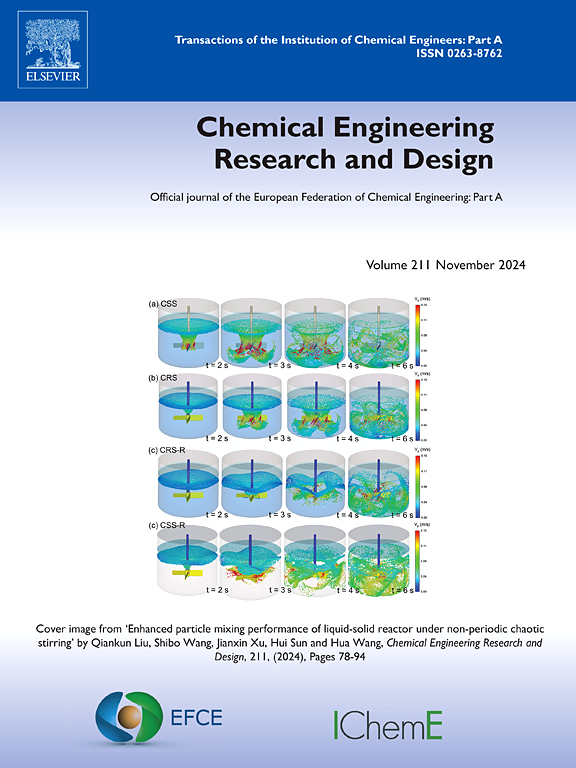Efficient recycle of palladium from wastewater by modified fumed nano-silica composites: Synthesis, adsorption, kinetics and mechanisms
IF 3.7
3区 工程技术
Q2 ENGINEERING, CHEMICAL
引用次数: 0
Abstract
In this paper, two adsorbents based on hydrophilic and hydrophobic fumed silica carriers for efficient recovery of palladium were prepared using 1,4,7,10-tetraazacyclododecane as a functional group. These functional adsorbents were characterized by FT-IR, SEM and BET. The effects of pH (2−6), contact time (1–480 min), and temperature (25–55℃) on the adsorption performance were investigated. The concentration of palladium(II) after adsorption was determined by flame atomic absorption spectrometry and the data were analyzed by kinetic, thermodynamic and isotherm fitting. At pH = 4, the adsorption conformed to Pseudo-second-order kinetic model, with rapid adsorption within 2 h and able to reach equilibrium within 5 h. Meanwhile, the Langmuir model was able to better describe the isotherm data, with the maximum adsorption exceeding 140 mg·g−1. Moreover, the thermodynamic analysis indicated that the adsorption was a heat-absorbing spontaneous process. The combination of XPS and DFT calculations elucidated the adsorption and desorption mechanisms, emphasized the potential of these adsorbents for the recovery of Pd(II) from aqueous solutions, and contributed to the development of sustainable and effective adsorption technologies.
求助全文
约1分钟内获得全文
求助全文
来源期刊

Chemical Engineering Research & Design
工程技术-工程:化工
CiteScore
6.10
自引率
7.70%
发文量
623
审稿时长
42 days
期刊介绍:
ChERD aims to be the principal international journal for publication of high quality, original papers in chemical engineering.
Papers showing how research results can be used in chemical engineering design, and accounts of experimental or theoretical research work bringing new perspectives to established principles, highlighting unsolved problems or indicating directions for future research, are particularly welcome. Contributions that deal with new developments in plant or processes and that can be given quantitative expression are encouraged. The journal is especially interested in papers that extend the boundaries of traditional chemical engineering.
 求助内容:
求助内容: 应助结果提醒方式:
应助结果提醒方式:


